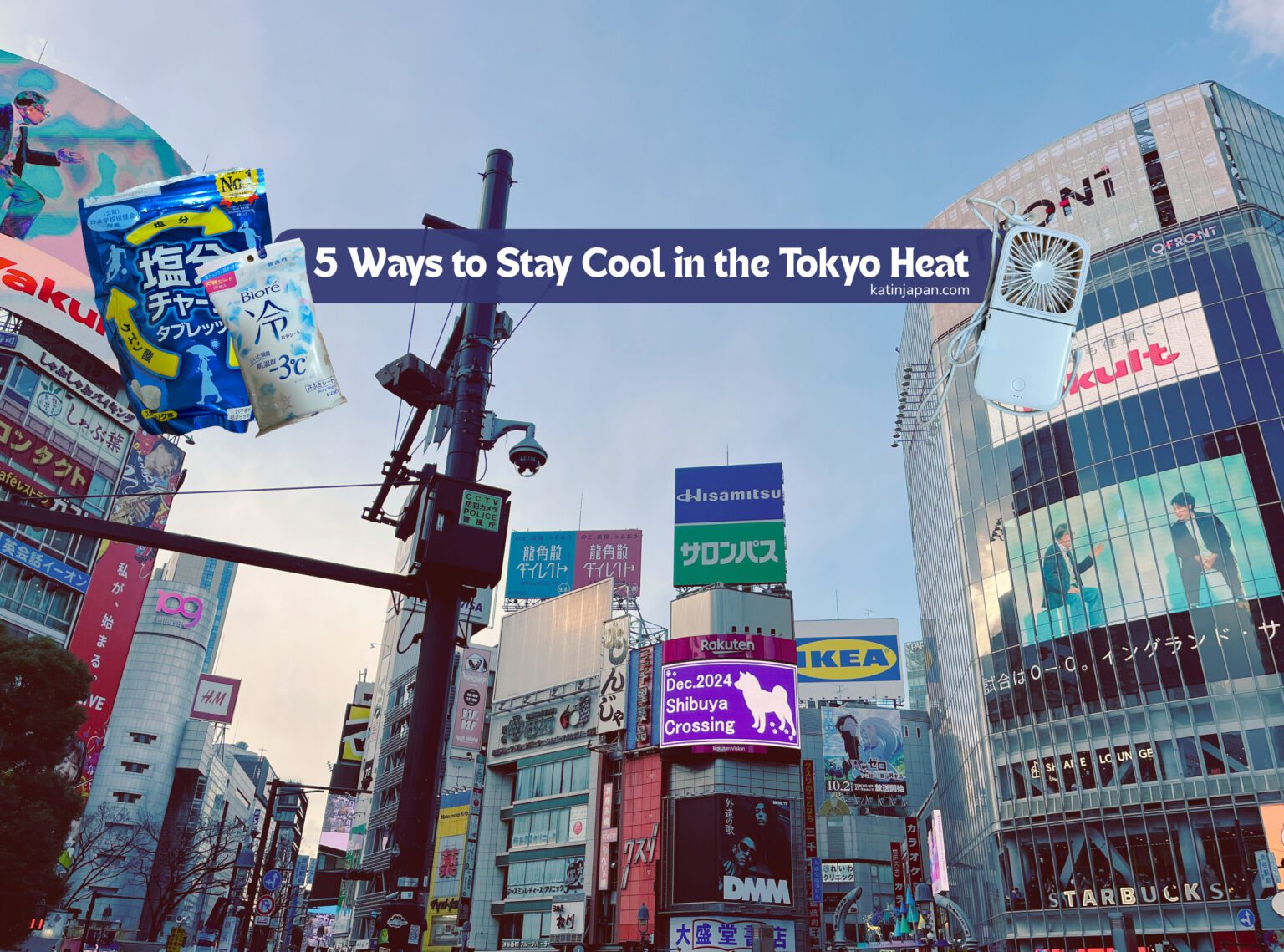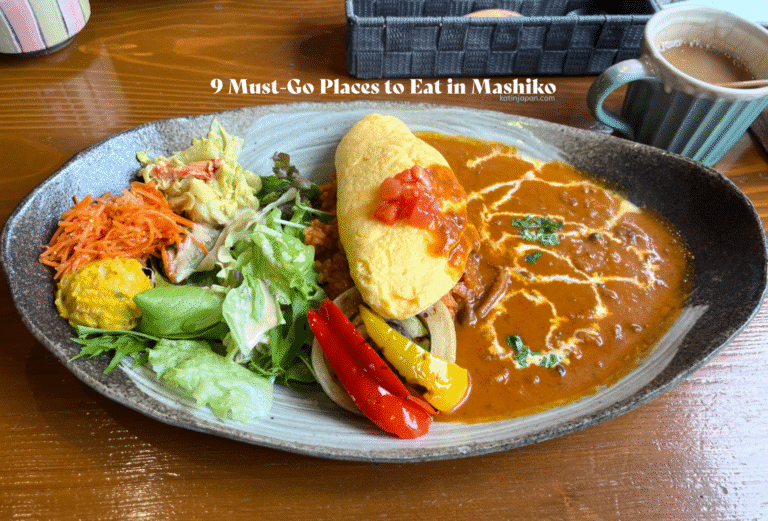I’ve lived in Japan for almost 4 years total now, and one thing that still surprises me is the heat.
Growing up in California, we never had humid weather. Constant droughts were the norm in the desert-rich Golden State. The mere concept of humidity was foreign to me outside of swamp coolers and hot showers.
Until I experienced it myself during my first trip to Japan, I couldn’t fathom just how hot and muggy summers could be.
So after a few years of dealing with it every summer, from the rainy season in May and June to typhoons from July to October, I’ve picked up some handy tips on beating the heat.
Check out my 5 ways to Stay Cool in the Tokyo Heat!
What is Heat Stroke?
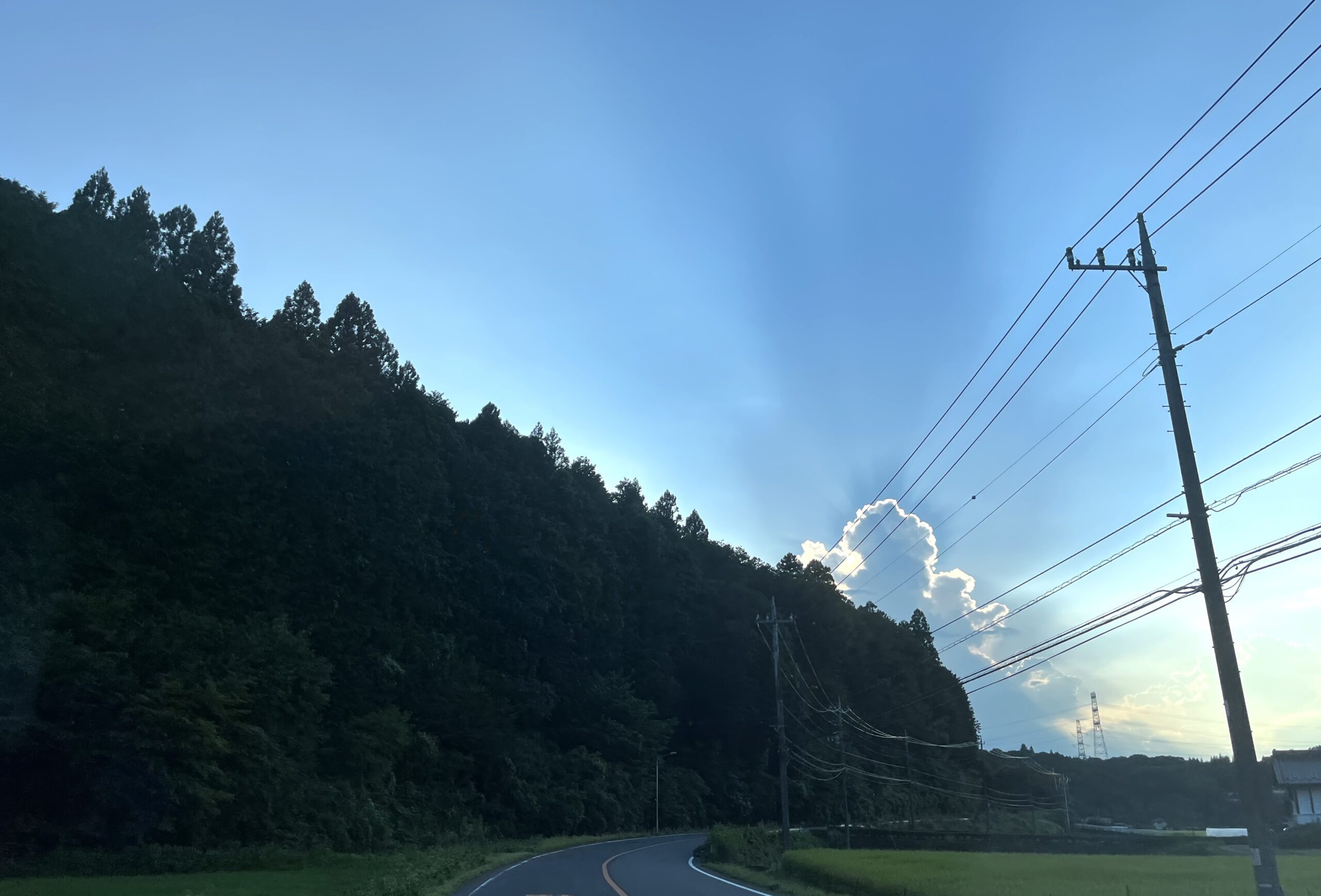
Heat stroke happens when your body overheats. It’s caused by an inability to cool oneself and stay hydrated.
It’s characterized by dizziness, slurred speech, fainting, high body temperature, and even seizures.
So, in a country like Japan, which is incredibly humid in Summer, staying cool can be a challenge.
Getting enough hydration to replace the water lost through sweating is crucial, and wearing appropriate clothing and using cooling items is necessary to combat it.
If someone near you is showing signs of heat stroke, get them to a cool place as soon as possible, and call a doctor.
Why is Heat Stroke an Issue?
Heat stroke is a serious issue in Japan. Every year, people ranging in age from children to the elderly are affected.
And some even die from it. In fact, according to Phys.org, 59 people lost their lives from April to August of 2024. It’s a problem the Japanese government is trying to combat.
Part of the reason why people keep dying from this preventable disorder is that these temperatures are hotter than normal. That and… people don’t always use or have air conditioners in their homes.
While this may not have been an issue twenty or thirty years ago, with climate change comes higher temperatures and fluctuating climate trends.
This trend has been rising in other countries too, in areas that used to be temperate or cool during the summer. Think of Spain, England, and yes, the US, too.
The Difference between Heat Stroke and Heat Exhaustion
It’s easy to get carried away on vacation in Japan, walking through the concrete jungle of Tokyo. But heat stroke and heat exhaustion are no joke.
Heat exhaustion is a slightly less severe form of heat stroke. It is characterized by headaches, cramps, dizziness, exhaustion, and an overheated body temperature.
Treat symptoms of heat exhaustion before they turn into heat stroke. Drink lots of fluids and electrolytes, and get to a cool area asap.
I can personally attest that heat exhaustion sucks. I’ve had it about four times in my life. Once during P.E. as a high-schooler, once in Bali, and twice here in Japan. Sometimes it’s linked to overexertion, and sometimes it’s the oppressive heat.
Each time I’ve lost vision temporarily, and felt myself go nauseous and dizzy. It’s not fun. So before this happens, try to drink plenty of water with electrolytes, and stay cool.
5 Ways to Stay Cool in the Tokyo Heat

Whether you’re walking around Tokyo, visiting Disney Sea, or touring hotspots like Meiji Jingu, Harajuku, Shibuya, you’ll need to stay cool and hydrated.
Plus, you can use this handy Heatstroke risk index by NHK to check the conditions on the day of your outing.
1. Pregame your Hydration
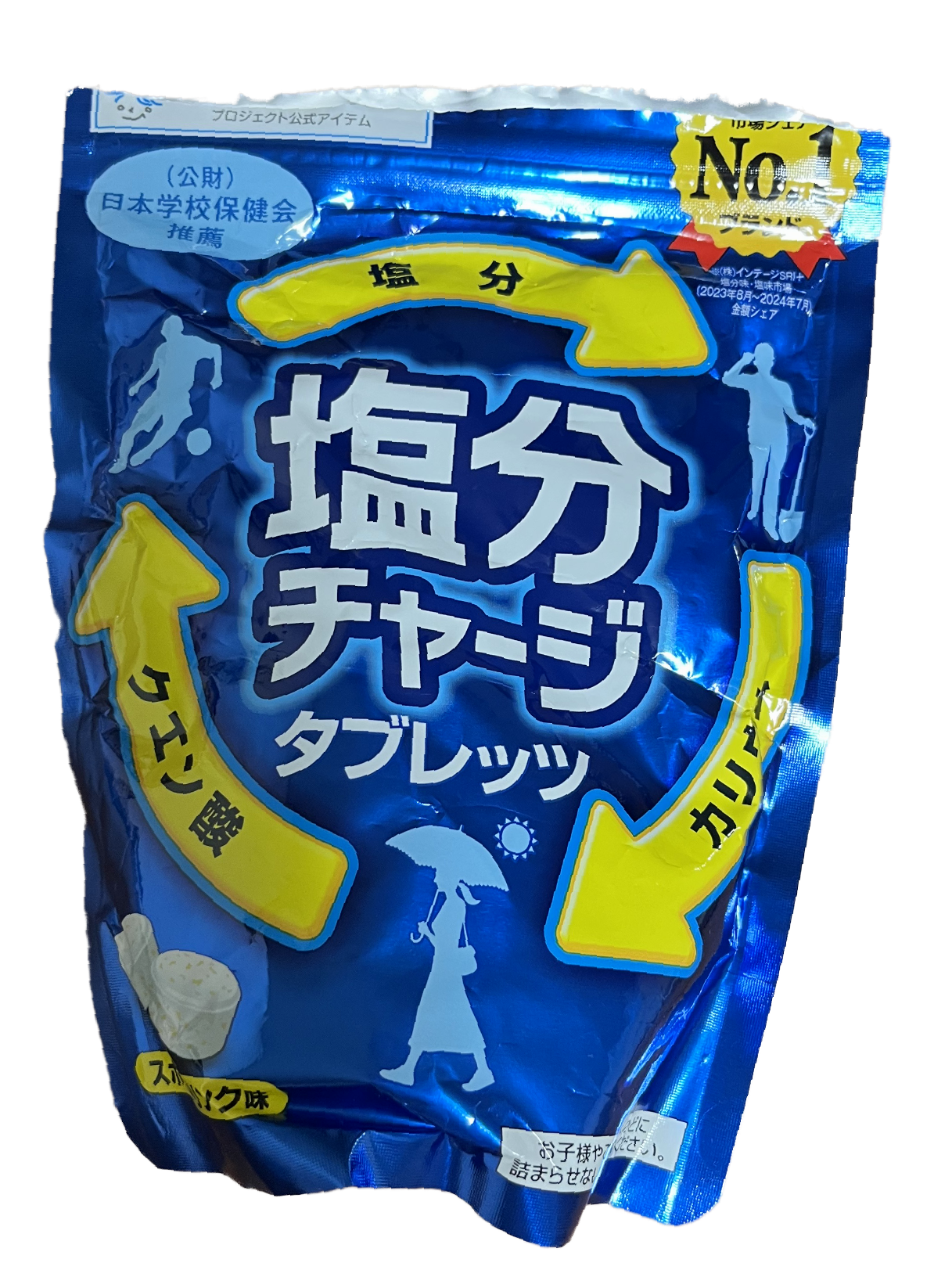
If you’ve ever heard the term “pre-game”, you know what this strategy is all about.
Like one might pre-game an evening of revelry at a party or club, you should prepare your body for the onslaught of summer heat.
Before you leave the comfort of an air-conditioned room, drink at least a cup of sports drink, or plain water with an enbun charge (塩分チャージ).
These tablets are essentially concentrated electrolytes that are popular in Japan. They help to reduce the probability of heat stroke in the hot and humid conditions.
While you should try to stay hydrated all day, this strategy will help you in those first minutes outside.
Oh– and don’t forget to bring some cold water with you. I recommend filling an insulated water bottle with ice water and carrying it with you. You can always refill with water and ice from the convenience store.
2. Use Cooling Wipes and Sprays
Japan has tons of cooling products to help you feel cool.
There are cooling wipes (reikan shīto 冷感シート), which can help you feel clean and cool, and cooling sprays (reikan supurē 冷感スプレー), which can be applied to your skin or clothes.
You can find tons of these in drugstores around the country. Popular brands for wipes are Bioré and Sea Breeze. There are also many brands of cooling sprays.
Some sprays can be used on your skin to create a cooling sensation, but they remind me of Salonpas. Instead, you could opt for “Shirt Cool” to spray on your clothes.
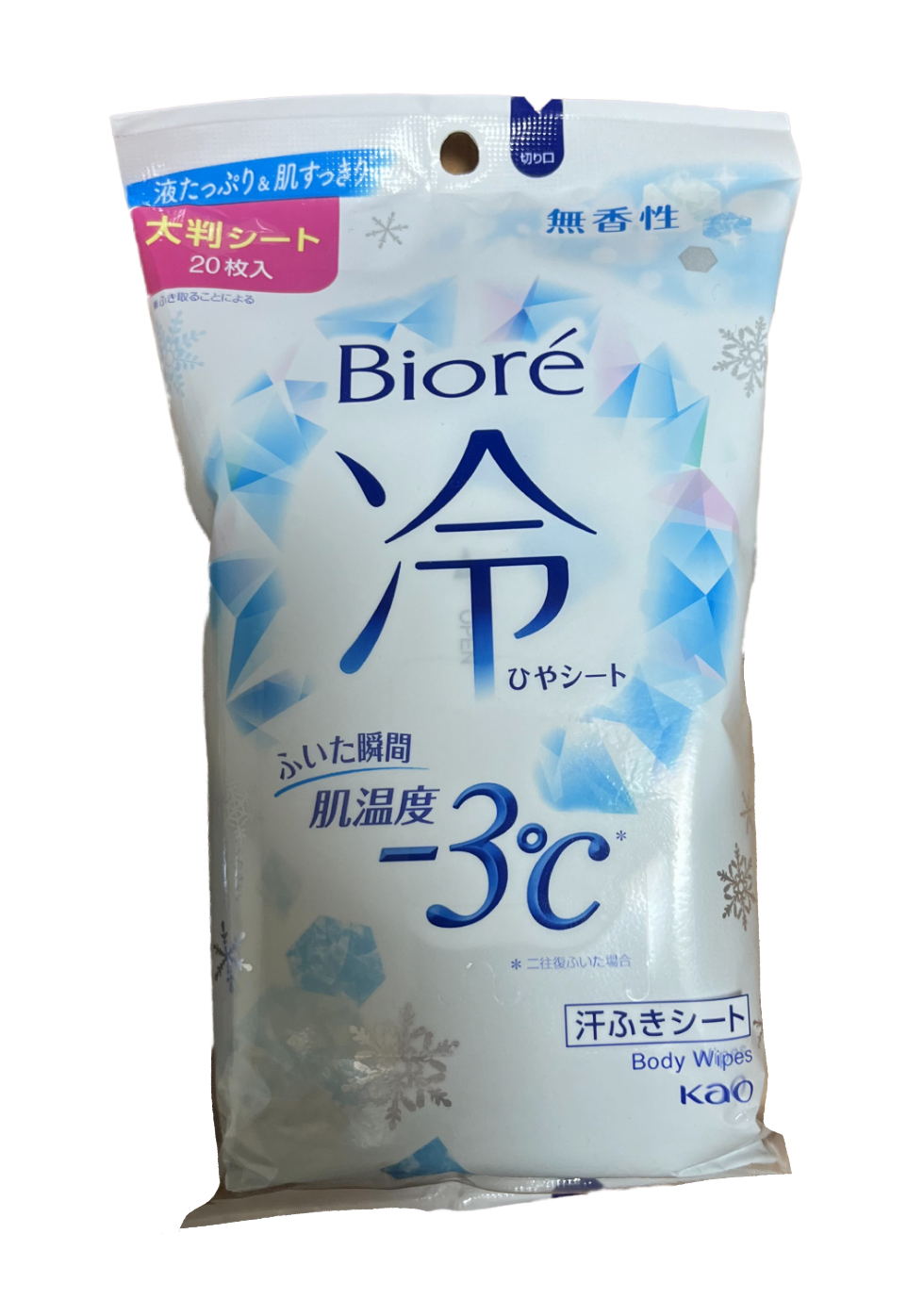
Be aware that these utilize menthol to create a cooling feeling. If you’re not hip on that, you can skip them and use a damp towel.
3. Take Advantage of Air-Conditioned Spots
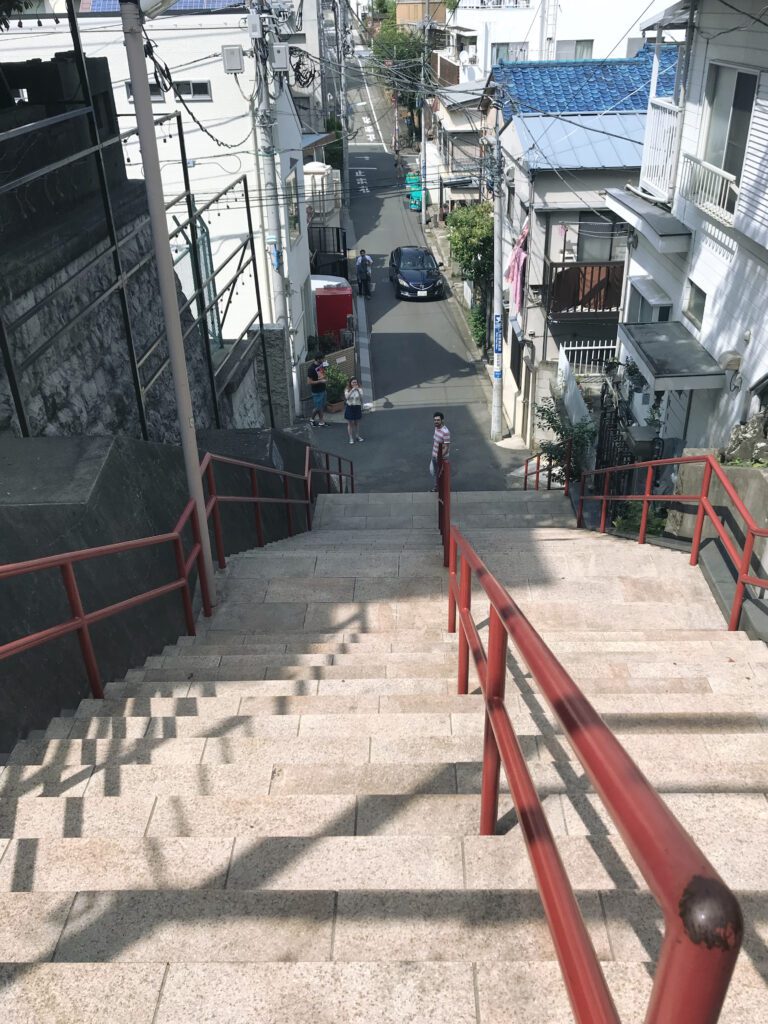

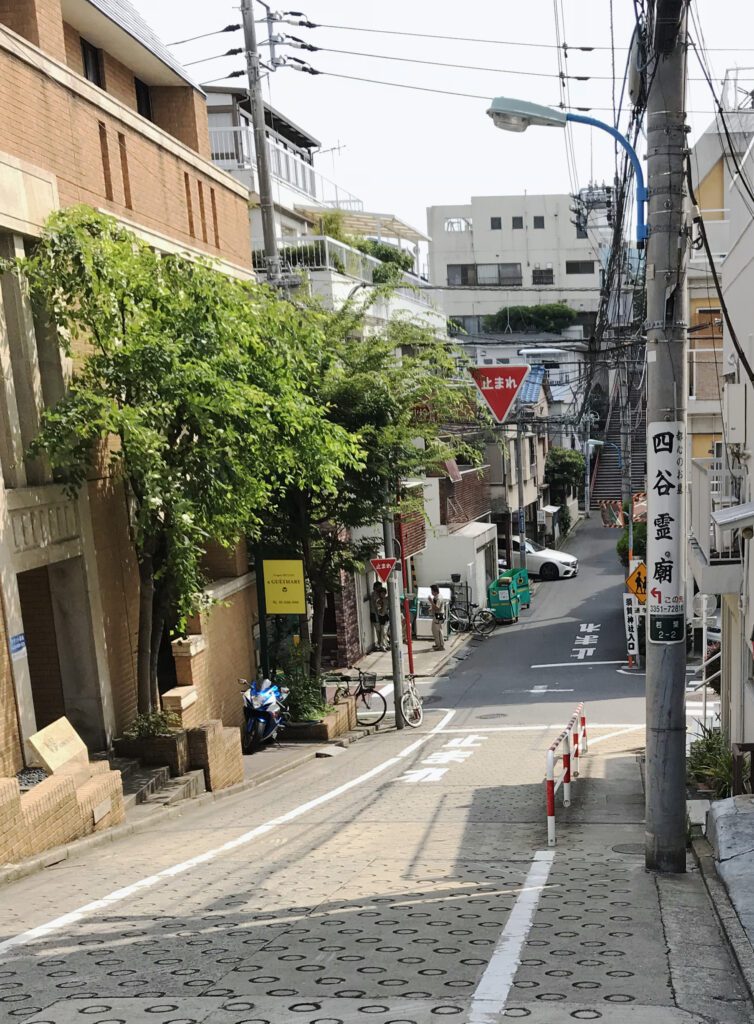
During activities like festivals and shopping, many people are quick to duck into convenience stores and underground shopping streets.
Another important strategy for this is to find a large department store and take your time browsing around. Bic Camera’s and large malls are often renowned for their freezing AC.
But my favorite hack is to find a family restaurant and take refuge in their air-conditioning while enjoying some snacks and drinks.
We did just that in 2018, attempting to find the real-life Your Name spots, and it kept us from overexerting ourselves in the heat.
You can also use this strategy for libraries, museums, and so on. Find a place to wander around while lowering your body temperature.
4. Get a Mini Fan, I’m Serious
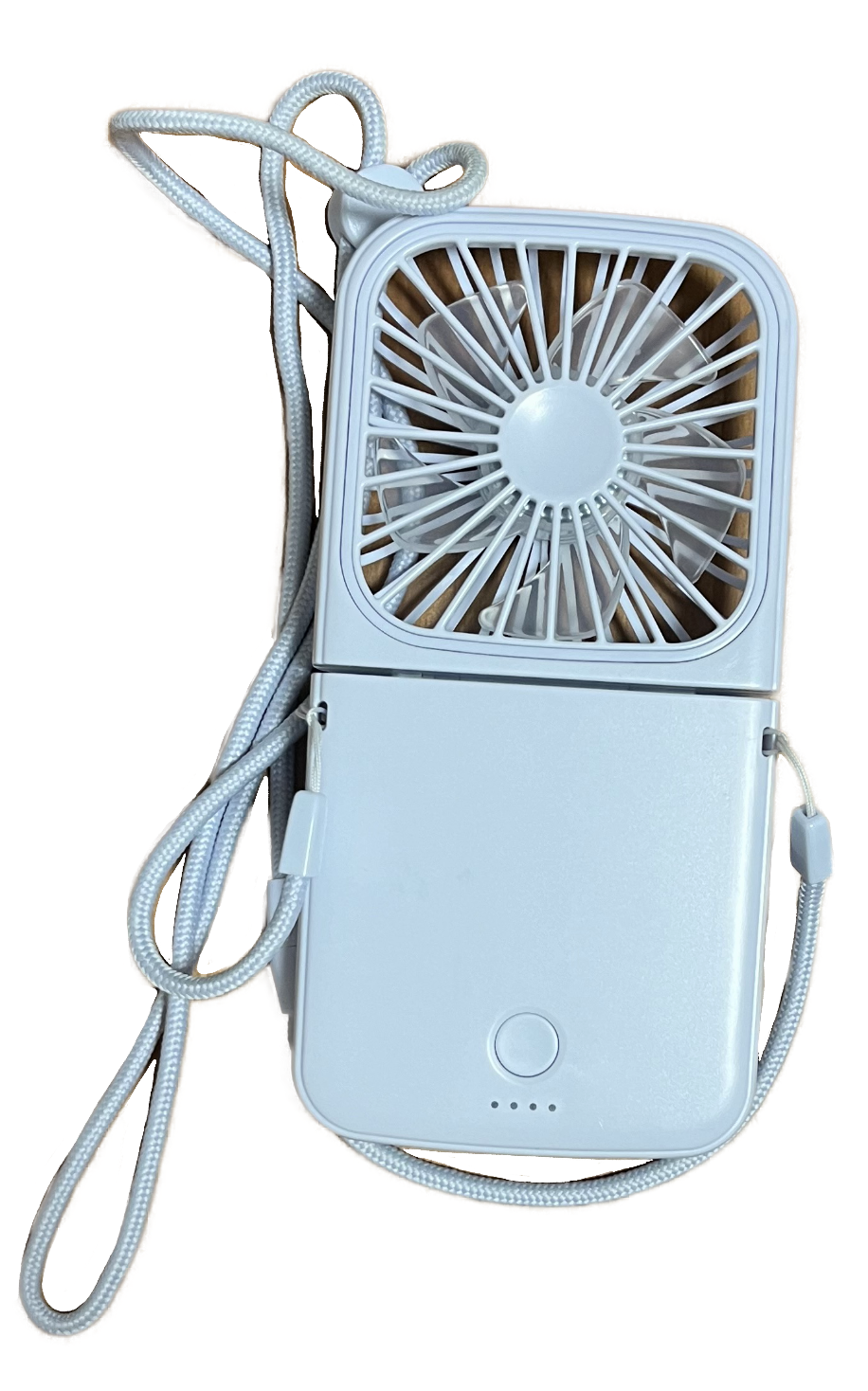
While those freezer neck rings look like they’re doing something, just skip ’em. Instead, go for the mini fan.
The neck rings become lukewarm plastic lumps in minutes. But the fans? They just keep going.
You’ll see everyone in Tokyo walking around, sitting on trains, or just hanging out while wearing these.
Mini fans are great because they help cool you down by evaporating your sweat even in the humid air. Kind of gross, but oh so helpful.
As a bonus, they can double as phone chargers in a pinch.
If you want to get a hand fan as a souvenir, that’s another great option, but there’s nothing like an automatic fan for your sweaty face.
5. Use a UV parasol or a Hat
Use a parasol or wear a wide-brimmed hat to keep the sun’s rays at bay.
At first, it may seem silly to use a parasol, but the intense sun rays in Japan can make you feel hotter.
Parasols help reduce the amount of sun actively heating your body. Plus, they reduce the UV rays that cause burning and tanning.
In my experience, a hat or parasol is also way better at keeping the sun out of your eyes. The sun here seems to bypass sunglasses, much to my chagrin.
And if nothing else, they make cute souvenirs that double as umbrellas back once you’re back home.
Other Tips and Ways to Stay Cool
1. Carry a Sweat Towel
Damp it with cool water and wear it around your neck, or keep it to blot off sweat as you walk around Tokyo.
2. Eat Cold Treats
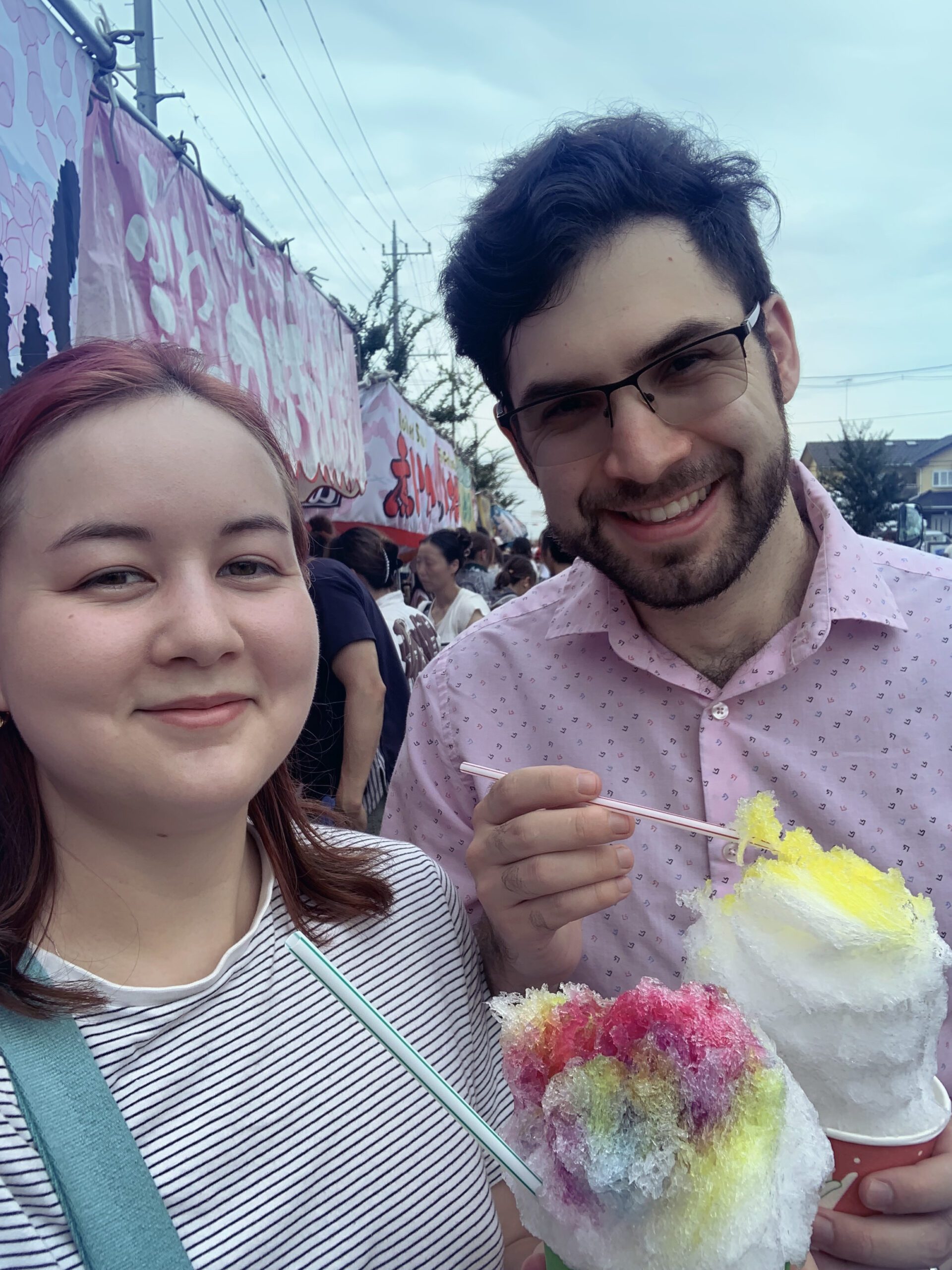
Cool down your body from the inside out by eating cold and refreshing sweets.
I’m a fan of shaved ice, ice cream, iced lemonade, and boba tea.
You can also buy frozen drinks like barley tea (mugicha 麦茶), green tea, and Pocari Sweat out of freezers in the convenience store.
We tried a mandarin orange and ice treat at our town’s festival last year that also cooled us down.
Fruits contain vitamins that can give you an electrolyte boost.
3. Wear Loose, Flowy Clothes
Though counterintuitive, loose clothes that cover the body can help air ventilate and keep the sun off your skin.
A thin undershirt to catch the sweat that will inevitably flow down your back, and front, and well, everywhere, is also highly recommended.
For tips on what to wear and how to stay cool during work, check out my What to Wear in the Summer as an ALT post.
4. Go out at Night to Avoid the Sun
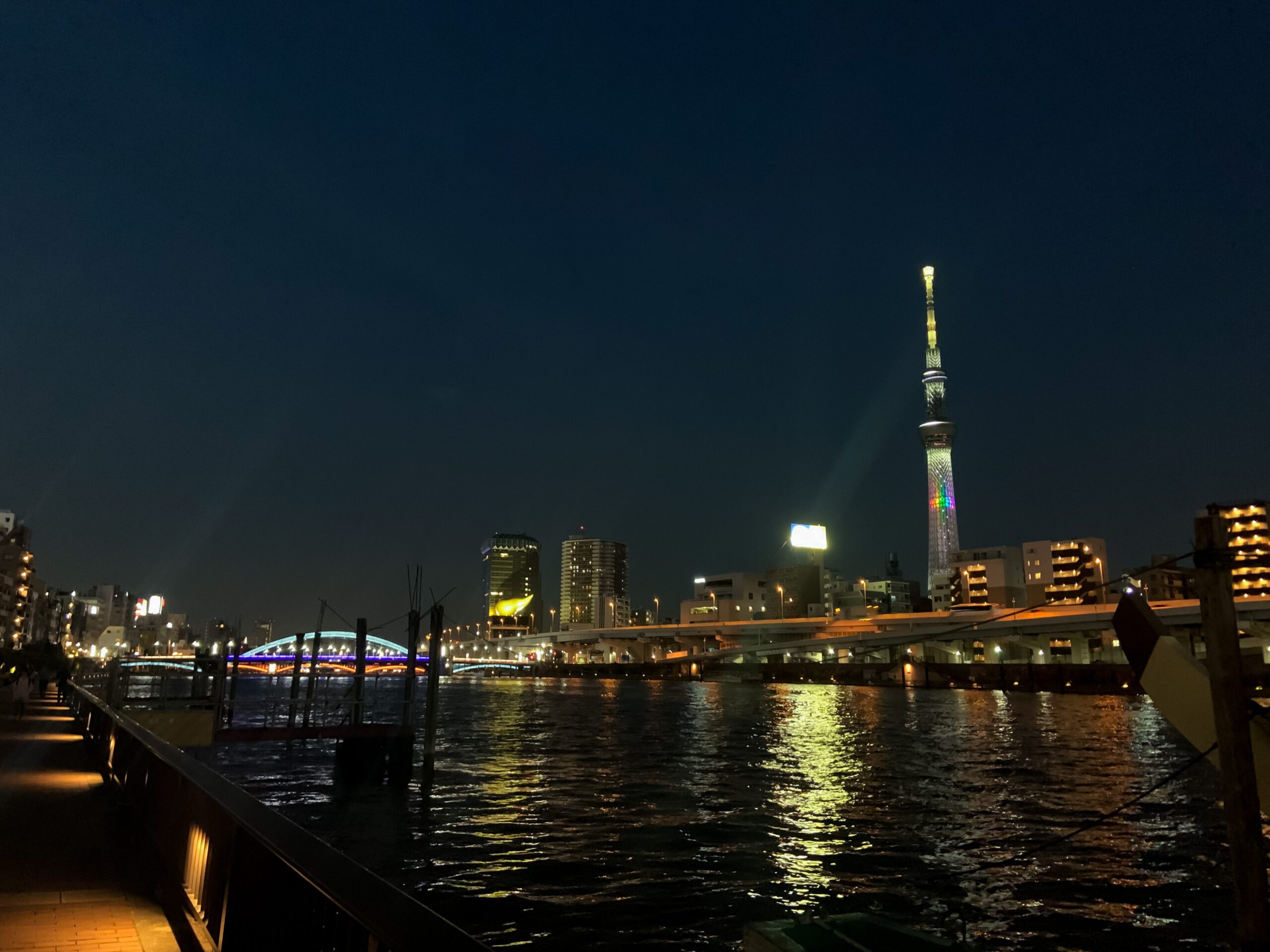
Nights in the city are balmy and illuminated by all kinds of lights from Skytree to Tokyo Tower and all the skyscrapers in between.
Tokyo is well-known for its nightlife, boasting delicious food stalls, bars, clubs, and karaoke that you can enjoy well into the wee hours.
And if you don’t mind the empty vendor spaces, visiting shrines like Sensōji and Meiji Jingū at night can be a wonderful way to admire the beautiful, spiritual structures.
My favorite place to walk at night is along the Sumida river. Just don’t forget your bug spray.

